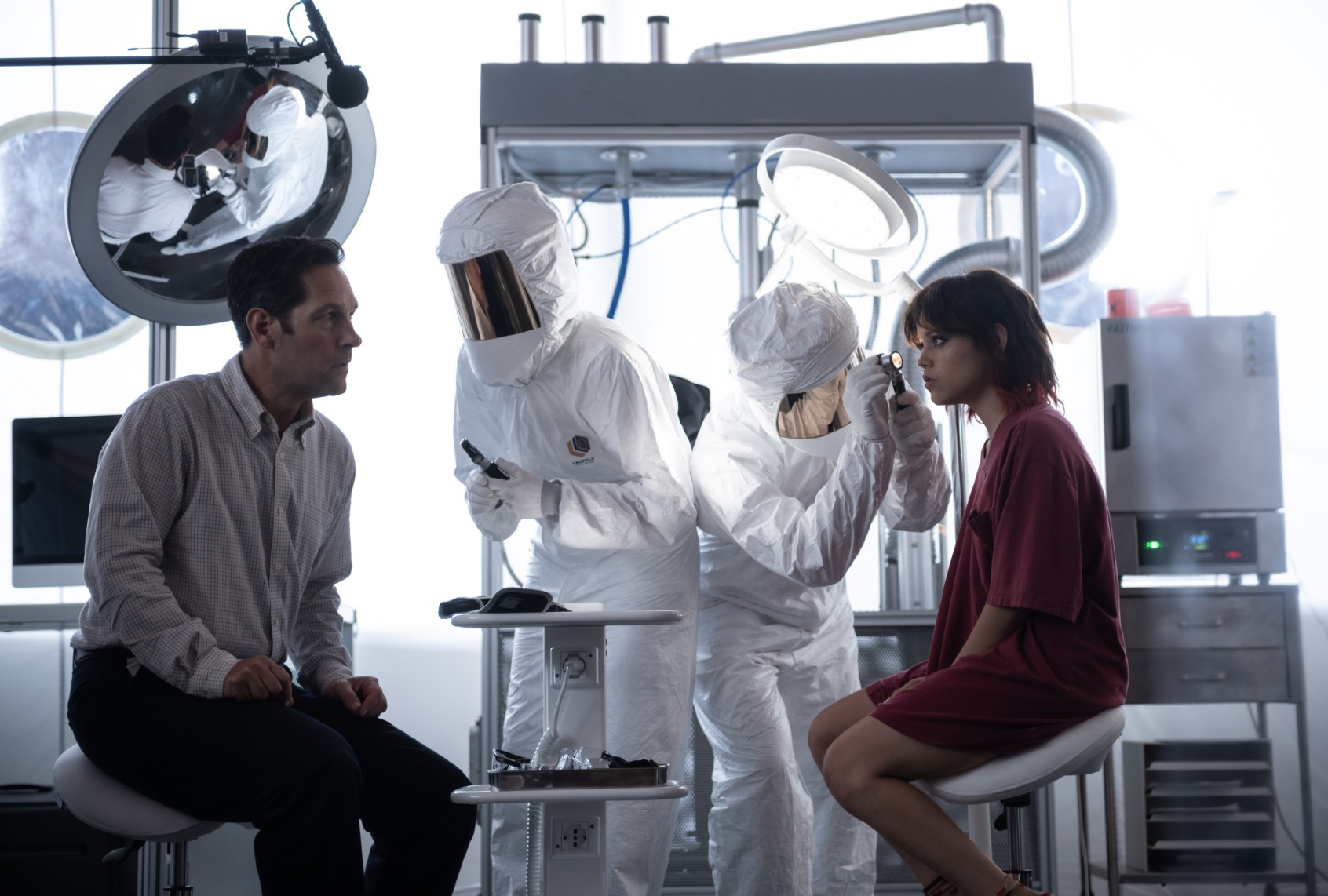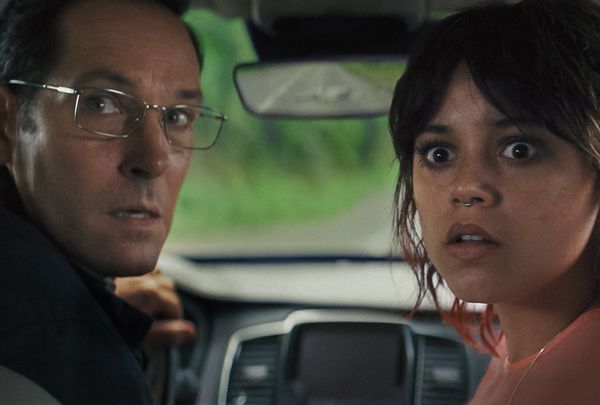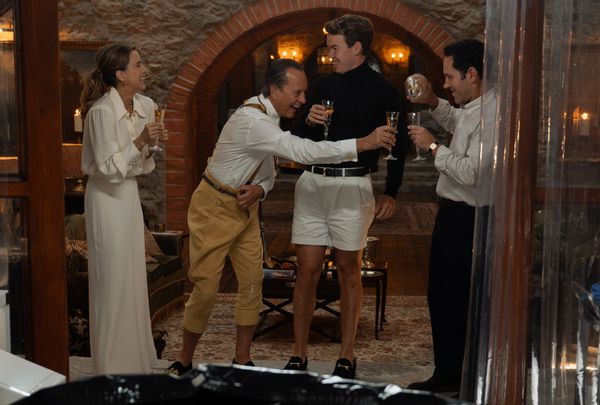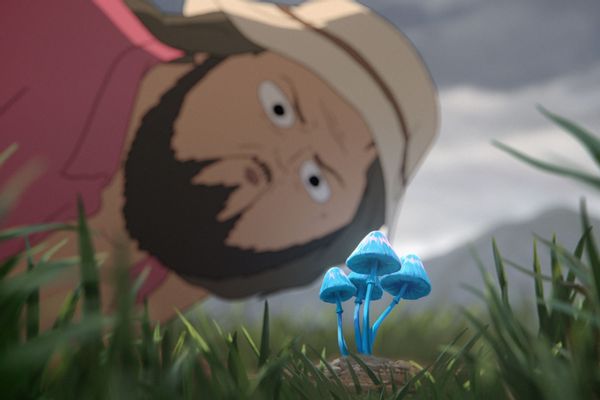
Perhaps that’s my fault. I shouldn’t have filled up on the rich before we arrived here at the movie theater to see “Death of a Unicorn,” the new star-studded film that sprinkles finishing salt onto the elite like it’s preparing them for a mukbang video. But how could I not arrive stuffed to the gills? From “Saltburn” to “The Menu” — not to mention all three seasons of “The White Lotus” — the viewing public has been inundated with “eat the rich” media for the better part of the last decade, and to varying degrees of digestibility. Some, like the first two seasons of “White Lotus” (Parker Posey is innocent!), have proven themselves excellent satires, casting a wide, barbed net to snare the affluent in their weak underbellies. Others, like “The Menu” and “Saltburn,” try their hand at shock and gags to trick the viewer into thinking they’ve got something novel to say when they’re really just glorified outlines for the final paper in an introductory economics course.
Though, it’s not hard to see why this subgenre has become popular. Audiences are constantly looking to see the wealthy get their butts handed to them, and the fervency of that desire has only grown as the disparity between economic classes has widened. Getting a leg up in life — or just being financially comfortable — is an increasingly difficult solace to attain, blocked by tax breaks for the rich, incessant bills and unaffordable housing. Thought you’d saved enough money for a Nintendo Switch 2? Better put $300 more dollars away. That incoming tariff will hit your wallet where it hurts.
With so much “eat the rich” content for us to soak up (including one of these movies that took home the best picture Oscar), it was only a matter of time before the fleeting merits of the subgenre’s worst entries were diluted into pure, inedible mush. Eating the rich has never been quite so putrid a task as watching “Death of a Unicorn,” a truly toothless satire that I’d struggle to even deem “half-baked.” It’s boorish and grating, assuming its audience will lap up whatever tasteless parody it puts out for them just because it aligns with popular films that share its basic themes.
The film, about a father and daughter (Paul Rudd and Jenna Ortega) who find themselves hunted by mythical creatures whose blood is the cure-all to any ailment, is almost devoid of any humor at all, saved only by its trio of conniving Big Pharma industrialists. What’s worse is that “Death of a Unicorn” hit theaters close to the same time the far superior satire “Common Side Effects” finished its first season, deriding the same topic. The wide gap in quality between the two projects speaks clearly to the dissonance between incisive, intelligent creators and those who want little more than to capitalize on an already dying trend. Unfortunately, viewers are caught in the middle, stuffing themselves on scraps when plenty of good food is left out there.

That “Death of Unicorn” opens the exact same way as other films of its ilk do isn’t the greatest vote of confidence for the film as it is. The movie begins with Elliot (Rudd) and Ridley (Ortega) taking a trip to the Leopold Wilderness Reserve, owned and operated by Elliot’s uber-wealthy employers. Perhaps you’ll recognize the familiar sight of middle-class characters wandering into elite circles on an idyllic getaway from films like “The Menu” and “Glass Onion.” The beats that follow aren’t much different, either. The Leopolds are looking to bring Elliot deeper into the fold (read: muck him up in their legal dirty work), and they’ve invited him and his daughter for a business visit — a gesture of goodwill after the relatively recent death of Ridley’s mother, whose memory serves to prop up the film’s flailing narrative. On the way to the Leopold estate, Elliot mows down an animal in the middle of the road. The thing looks suspiciously like a unicorn, horn and all. But there’s no time to waste, so Elliot puts the animal out of its misery with a tire iron and loads it into the trunk of their rental.
Amid the ensuing gore, played for cheap chuckles, Ridley is splashed with the unicorn’s purple blood, which clears up her acne and gives Elliot perfect eyesight. Ridley insists that they examine this phenomenon further, but Elliot would prefer to brush it under the rug so as not to worry their hosts. That is, until the creature, whose healing powers work on itself too, comes back to life and starts kicking the hell out of their car. It's a good thing Elliot paid for the damage insurance.
In no time, the Leopolds — ailing father Odell (Richard E. Grant), his wife Belinda (Téa Leoni) and their ambitious son Shepard (Will Poulter) — get wind of what’s going on and devise a plan to use the unicorn’s blood for their monetary gain. If they can harness the creature’s healing properties, no other pharma company could compete with their product. The rich won’t just get richer, they’ll be virtually untouchable.

Unsurprisingly, this does not go as planned. The Leopolds are too blinded by their greed to foresee any potential consequences, and when the unicorns’ parents come in from the hills around their wildlife reserve, the film devolves into a “Jurassic Park”-style bloody disaster. Rudd and Ortega’s characters are so paper-thin that viewers can see right through them, getting a look at what will come next before Elliot and Ridley do. Writer-director Alex Scharfman makes a worthy attempt at sketching the Leopolds as a parodic version of the real-life Sackler family, but never gets close to conjuring their cold-blooded, dark-hearted evil.
It’s worth noting that Leoni, Grant and Poulter hold the film together with their comedic turns; Belinda greeting Elliot by getting off the phone and saying, “We’re evacuating the orphans! Or . . . are we vaccinating them?” got a good laugh out of me. But the trio’s talents don’t excuse the fact that Scharfman gives his characters almost nothing to work with. What drives their greed? What’s their long game? We’re never supplied with any semblance of an answer, just expected to take these mere silhouettes of rich people as they are. Maybe it’s a fool’s errand to look for logic in a film about unicorns, but an effective satire demands a realistic, recognizable framework. The film’s actors all come ready to dig into material that isn’t there, tasked with making a meal out of crumbs. As it turns out, these rich are not very filling at all.
Such is not the case for “Common Side Effects,” the invigorating Big Pharma takedown that just finished its 10-episode first season on Adult Swim (and is streaming on Max). Creators Joe Bennett and Steve Hely are so adept at hooking viewers that it’s almost frightening. In the show’s first five minutes, Bennett, Hely and co-writer Jon Foor present a perfectly succinct vision. Frances (Emily Pendergast), the assistant to a high-powered pharmaceutical rep, reconnects with Marshall (Dave King), a former classmate who tells her about an all-healing mushroom so powerful it can bring the dead back to life. Frances is shocked when Marshall uses the mushroom to revive a dead pigeon and takes him up on his offer to help grow and spread the mushroom, deciding to keep her job a secret from Marshall — at least for now.
Before the opening theme even begins, “Common Side Effects” establishes its characters, stakes, humor style and the bevy of potential narratives it can work through. And the series makes good on each and every one of those promises throughout its first season. It’s a gripping saga that consistently makes unexpected turns to keep the viewer held by their collar, eyes wide, waiting to see what will happen to Marshall, Frances and their precious mushroom next.

And it’s that beautifully animated, glowing blue fungi that tie the show together. Unlike “Death of a Unicorn,” Bennett and Hely are far more interested in the effects and ramifications of the mushroom than they are in satirizing the rich who will inevitably be in pursuit of its power. They’re confident that the humor will emerge naturally as they move deeper into this story. “Death of a Unicorn” is so certain that its audience will care more about the paltry laughs it can draw out of its Sackler spoofs that the finished film feels altogether smug. Watching it is like seeing a waiter skip over with a covered silver platter, only to remove the top to reveal a watered-down, Cocomelon-level satire for iPad babies, dripping from the dish. Maybe the drivel would sate you for an hour, but something with genuine substance would taste and feel a whole lot better in the long run.
That’s precisely what “Common Side Effects” is so adept at doing. Across its first 10 episodes, the show builds on itself for an endlessly satisfying watch experience. It’s not a means to an end but rather a journey that feels gratifying from start to finish. Unlike most post-“Parasite” satires, “Common Side Effects” encourages its viewers to think about its themes in new and mystifying ways. It does not present two sides of a conversation — the good and bad — but rather a variety of nuanced perspectives, cleverly explored through all of the possible figures that might have some interest in the mushroom and its powers. There’s the FBI, corrupt politicians, money-hungry pharma reps, the sick and the terminally ailing, drug addicts — anyone who might want to use the mushroom for any purpose. And instead of simply presenting these characters to an audience, as “Death of a Unicorn” does, the series scrutinizes them. What makes them tick, and can even the seemingly immoral be changed for the good?
“Common Side Effects” is only just beginning to answer these questions, and luckily, the show has been picked up for a second season. But the show isn’t exactly seeking firm answers. Rather, it’s keen on probing our sick and broken world to reveal all of the hope that still exists in the shadows. This is not your average “eat the rich” farce. The series’ writers go to admirable lengths to explain why a cure-all mushroom could be potentially hazardous to our world. Yes, it could make pharmaceutical companies and their top staffers an enormous amount of cash. It could also divide society, creating a demand so intense that the supply could never match it. Violence would soar, the medicine could fall into the wrong hands, oligarchs and evildoers would never die. But do those possibilities negate the benevolence of trying to get the mushroom to people who need it, those who don’t deserve to suffer the ravages of disease?
When “Common Side Effects” explores this further, analyzing the mushroom’s effects on Frances’ mother, who has dementia, the series strikes a stunning emotional core. I couldn’t help but think of that plotline while watching “Death of a Unicorn,” where Ridley’s anger at the healthcare and pharma industries that had a hand in her mother’s untimely death is shuffled to the background, so far from the main storyline you might just miss it. What’s left instead? Tiresome, gory unicorn revenge catering to the stoner crowd? “Death of a Unicorn” is content to be nothing more than a survey of a world divided, played for laughs as the cosmos burns. “Common Side Effects,” on the other hand, offers a hopeful fire extinguisher. It’s legitimately heartening, as timely as it is eternal. That’s precisely what a satire should be, and what the starved public needs. After so many years of eating the rich, the taste has grown bland. We’ve needed some glowing, blue fungi to spice things up.







